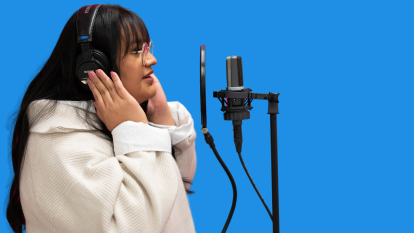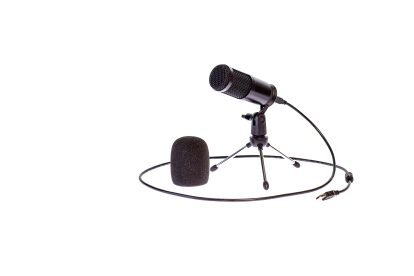 Vocal Health
Vocal Health
How Are You Making that Sound? A Look at Increasing Vocal Control
Tyley Ross takes a literal look ‘inside’ the physiology of different vocalizations
While guitar players can watch their chord formations and violin players can be conscious of the placement of their bow, for those whose instrument is their voice, a lot of imagination is required to fine tune your ‘playing.’
Anyone who has ever had to learn the difference between your chest voice and your head voice – or visualized activating diaphragmatic breathing has been there!
This poses a special challenge, as using your voice, whether as a voice actor or a singer, does pose a unique challenge. While voice acting is a highly physical endeavor (using facial expressions and often times, sweeping gestures), it’s also mental, requiring you to take on a character or persona and deliver a performance in a way that will delight your client.
You hope that you’re using your voice in a way that maximizes your natural ability, but how can you be sure?
If you’ve ever wished you could move beyond visualization and truly see what’s happening with your voice as you take on different styles and inflections, this post is for you.
To help individuals reach a new level of appreciation for the physicality behind the voice’s many sounds, singer, actor, coach and vocologist, Tyley Ross, used MRI technology to bring all of these ‘vocal gymnastics’ to life.
When You Sing the Same Song in Different Styles, You Physically Change
Tyley’s video, ‘Singing in the MRI’ shows that the sound you’re producing is pulling from more than just your genetic physiology. In fact, you probably have more ability to physically manipulate and control what’s happening than you realize.
Watch the video, ‘Singing in the MRI,’ below to see what we’re talking about!
Understanding Your Vocal Instrument Helps Deliver a More Powerful Performance
Watching the above video is a clear demonstration that the way you physically move your instrument has a huge impact on the end performance.
“I’ve sung since I was a little kid, performed for thirty years, taught singing for over a decade, but still, seeing video of myself singing in an MRI was a revelation,” says Tyley. “I wanted others to see what was made clear to me here: When we change the shape of the vocal tract, we change the sound of our voices.”
Further to Tyley’s point in the video, not many individuals are able to consciously feel or control their soft palate, but it clearly has a powerful role to play when it comes to how you sound.
“We aren’t able to see what’s happening inside our bodies when we sing,” says Tyley. “So singers are often left to guide their sound with super-subtle physical sensations and visualizations. When a singer is asked to sing ‘with a warmer-tone’ or ‘like an elf’ or with the sound of a ‘fuzzy-purple-sparkling-stretchy-tone,’ they visualize a sound and in doing so manipulate their vocal anatomy which in turn changes their sound.”
Understanding how all of your physical features work together to modify your vocal performance is a great tool for voice actors. When you use the knowledge of the physicality, combined with your normal visualization practices, your ability to ‘go there’ in a role becomes that much more powerful and refined.
For instance, knowing how your body shifts when you are playing a character who is the announcer at the county fair, versus the character who is the everyday hero, can help you move more quickly between each role.
Additional Tips on Increasing Vocal Control
When it comes to the power of visualization over performance, Tyley certainly isn’t alone. However, singers may also wish to consider vocal care as another means to achieving a better grasp on their performance.
“One of the most challenging aspects of being a voice artist is having full command of your instrument,” adds Stephanie Ciccarelli, Voices’s Co-Founder and Chief Branding Officer. Much of this has to do with breath and how it is budgeted. Being intentional with tone, inflection and pacing also adds complexity to the mix. One of the best gifts a voice artist can give themselves is a well rested, warmed up, hydrated and supported instrument. When the voice is taken care of, it has an elasticity that builds confidence, fortifies a performance and allows the artist to play.”
About Tyley Ross
Tyley is a Canadian-born Voice Coach, Vocologist, Actor, Recording Artist and Singer, living in Brooklyn, New York. Along with ongoing performing activities and creative projects, Tyley teaches private voice at NYU’s Tisch School.
He’s also a vocal technician at MTCA and the on-site Vocologist at the NYU Langone Voice Centre.
In addition to providing coaching, Tyley has led voice workshops around the world for other private clients, including Grammy-winning recording artists, Tony Award-winning Broadway stars, TV and film actors, broadcasters, theater and voice students, and many more.



Comments
Very interesting I have allot to learn.